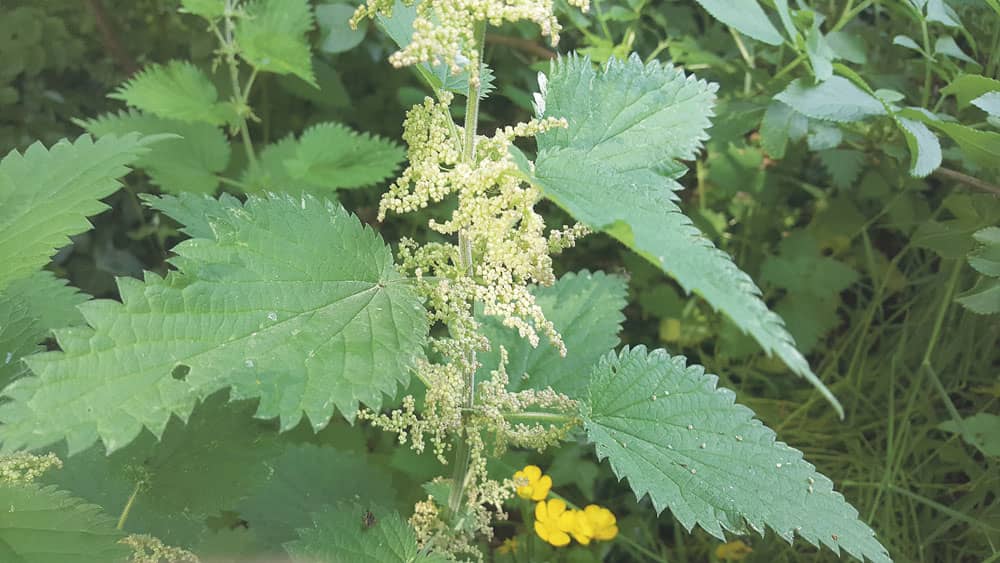
Nature on our doorsteps: Grasping the very useful Nettle
By Rosaleen Dwyer
Almost everyone is familiar with the Nettle plant. It grows very well in places where the soil has been disturbed or enriched with nutrients.
These conditions often exist wherever humans live, particularly in the days before public sewerage!
Caterpillars of the Small Tortoiseshell and Peacock butterflies devour Nettle leaves
Despite its stinging abilities, the Nettle is a very useful plant. Because it is rich in Vitamins A, C, iron, and other minerals, it was once widely used in early spring as a tonic.
Today, the plant is also sometimes used by gardeners to make a liquid fertiliser for vegetables.
Nettle stalks are tough and stringy, and these fibres were once used to spin high quality nettle cloth.
This was said to be ‘softer than wool and warmer than linen’.

Nettle’s tiny white flowers bloom in June
Many insects depend upon Nettles, including the caterpillars of butterflies like the Small Tortoiseshell, the Peacock and the Red Admiral which all devour its leaves.
The plant’s ‘sting’ is caused by a drop of formic acid stored in the tiny hairs on the Nettle’s leaf. When we brush gently by, these hairs pierce our skin and deliver the acid directly into us.
The juice of a crushed Dock leaf helps ease this sting. If, however, the Nettle leaf is grasped tightly, the hairs are crushed. This prevents the acid getting under our skin and stinging us.
Given how useful this plant is, fortune certainly favours the brave when it comes to grasping the Nettle.

